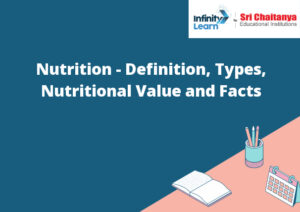Table of Contents
Nutrition – Definition, Types, Nutritional Value and Facts
What is Nutrition?
Types of Nutrition;
Rice Nutritional Value of Brown and White rice;
Comparison of Brown and White Rice:
Nutrition is the process of providing or consuming food in order to maintain life.
There are many different types of nutrition, but the most common are:
-Macronutrients: These are the nutrients that the body needs in large amounts, including carbohydrates, proteins, and fats.
-Micronutrients: These are the nutrients that the body needs in smaller amounts, including vitamins and minerals.
-Fiber: This is a type of carbohydrate that the body cannot digest, but that is important for maintaining digestive health.
-Water: This is the most important nutrient of all, and is necessary for all life processes.
There are also different types of nutrition based on how the food is consumed:
-Oral nutrition: This is the most common type of nutrition, and involves eating food that is consumed by mouth.
-Enteral nutrition: This is a type of nutrition that involves delivering food directly to the stomach or small intestine through a tube.
-Parenteral nutrition: This is a type of nutrition that involves delivering food directly to the bloodstream through a needle or IV.
Rice is a grain that is a staple food in many countries around the world. There are two main types of rice: brown rice and white rice.
Brown rice is a whole grain that has not been processed, while white rice has been processed to remove the bran

Autotrophic Nutrition
Autotrophic organisms are those that can produce their own food from simple inorganic molecules, such as carbon dioxide and water. The process of producing food from simple inorganic molecules is called photosynthesis. Most autotrophs are plants, but some protists and bacteria can also perform photosynthesis.
Heterotrophic Nutrition
Heterotrophic nutrition is a process by which an organism obtains nutrients from organic matter. This type of nutrition is common in animals and fungi, and involves breaking down complex molecules into simpler ones that can be absorbed and used by the organism. Heterotrophic organisms typically have a digestive system that allows them to extract nutrients from their food.
Nutrition Food Values
Food values are a measure of the nutritional content of a food. They are typically expressed as a percentage of the recommended daily allowance (RDA) for a given nutrient. Food values can be used to help you choose foods that are high in nutrients and low in calories.
Raw Peanuts Nutrition (100 grams)
One hundred grams of raw, unsalted peanuts provide 540 calories, 27 grams of protein, 48 grams of fat, and 17 grams of carbohydrates. Peanuts are a good source of niacin, vitamin E, folate, magnesium, and phosphorus.
Milk Nutrition in 1 Cup (Around 240 ml of Milk)
A cup of milk contains around 240 ml of milk and provides around 8 grams of protein, 20% of the Daily Value (DV) for calcium, and 10% of the DV for vitamin D. Milk is also a good source of phosphorus and riboflavin.
Explain in detail :
The article begins by discussing the history of the internet, and how it was initially created as a tool for researchers to connect with each other. It then goes on to discuss the way in which the internet has evolved, and how it is now used by billions of people all over the world. The article discusses the way in which the internet has changed the way in which we live our lives, and how it has made it easier for us to connect with each other. It also discusses the way in which the internet has changed the way in which we do business, and how it has made it easier for us to connect with potential customers. The article concludes by discussing the way in which the internet is likely to continue to evolve, and how it is likely to change the way in which we live our lives in the future.








